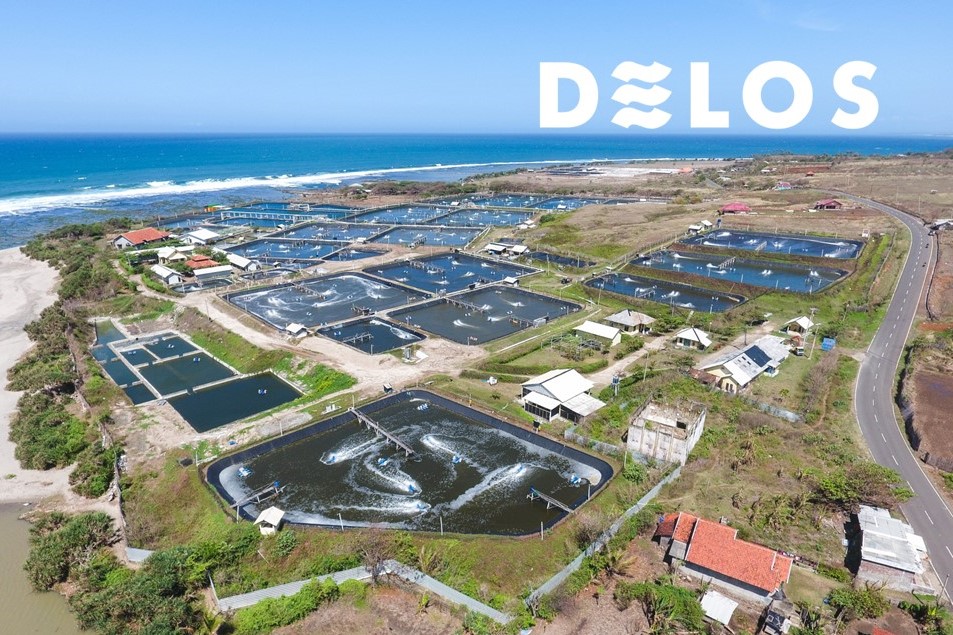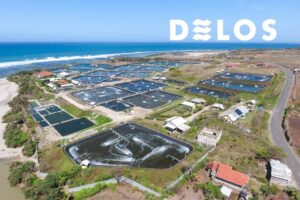5 Stages of Vannamei Shrimp Pond Preparation Before Doing Cultivation
Cultivating vannamei shrimp pond is a very profitable business. What’s more, vannamei shrimp is a type of shrimp that grows quickly from fry to harvest. That is, one cycle only takes three months.
Vannamei shrimp pond plays a crucial role in aquaculture. Because, in this pond, the shrimp will be raised until they are ready for harvest later. Therefore, you need to prepare the pond well.
This pond preparation aims to support the formation of an ecosystem conducive to maintaining shrimp during one cultivation cycle. What preparations need to be made, and what are the steps? Read more in this article!
Also Read: 4 Types of Vannamei Shrimp Farms You Have to Know
Vannamei Shrimp Pond Preparation Stages
1. Pond Cleaning
The earliest preparation for vannamei shrimp pond is the cleaning stage. In this stage, waste disposal is usually carried out, especially organic and phosphate waste accumulated at the bottom of the pond.
While the cleaning method can be done in two ways, namely the dry method and the wet method.
a.) Dry Method
Cleaning vannamei shrimp pond using the dry method uses sunlight to dry them. The trick is to drain and let the shrimp pond be in the sun for 10-30 days.
Furthermore, the waste at the bottom of the pond begins to be cleaned and disposed of in a predetermined place. However, this dry method cannot be applied to all parts of the pond, so it must be cleaned using a wet method.
b.) Wet Method
In areas where vannamei shrimp pond cannot be completely drained, they will usually be cleaned using a wet method. This method is carried out by spraying high-pressure air to remove waste from the previous cultivation cycle.
The wet method has an advantage in terms of time compared to the dry method because it only requires a short time, making it more effective and efficient.
2. Liming
After the vannamei shrimp pond are cleaned, the pond must be filled with water and left overnight before rinsing to remove residual waste and increase the pH. This process must be continuously repeated until the pH of the water is above 7.
When the pH of the water reaches 7, liming can be done. The type of lime used in this process is usually CaCO3 or dolomite lime [CaMg(CO3)2] for pond water with a pH close to neutral. Meanwhile, for water pH below 5, hydrated lime [Ca(OH)2] is used.
In addition, you also have to calculate the amount of lime used carefully. This is to avoid the air pH being too high, which can increase ammonia toxicity and result in death in shrimp.
During the process, lime must be spread over the entire pond bottom and up to the top of the barrier. Most of the lime should also be applied over the feeding area and any parts of the pond that remain wet.
Also Read: 4 Types of Vannamei Shrimp Harvest Time
3. Extermination Predators
The next stage of preparation for vannamei shrimp pond is eliminating predators to prevent them from entering the pond area. The way to do this is to filter the water that will be used to fill the pond with a filter with a fine mesh.
These predators or intruders include fish, crustaceans, and other invertebrates that can eat shrimp food or even carry parasites and diseases.
In addition, during the first month of vannamei shrimp cultivation, water should only be added to the pond if the water quality is poor and causes the shrimp not to develop properly. This avoids the entry of competitors or predators for the shrimp.
4. Fertilization
The next step in preparing for the vannamei shrimp pond is fertilization. Shrimp pond must be given fertilizer to stimulate plankton growth to prepare ecosystems and natural food for vannamei shrimp.
Fertilizers must be dissolved before spreading over the pond water surface to avoid fertilizer deposition on the pond’s bottom. This is because the fertilizer settles at the bottom will fertilize the soil and accelerate algae growth.
After fertilization, the plankton will develop in a few days and the water will change color to slightly green.
5. Aeration
The final preparation stage for vannamei shrimp pond is preparing the needs for pond aeration and turbulence. This stage must be carried out based on consideration of production targets, configuration, energy availability, and cultivation systems.
Preparation of aeration aims to ensure the supply of dissolved oxygen, avoid dead currents, direct sediment, and prevent stratification of temperature and salinity in pond water.
The type of aerator used depends on the pond’s area and the water’s depth. For example, a pond with an area of 0.5-1 ha requires four aerators installed in the corners to encourage maximum water flow.
The aerator must be turned on 24 hours before the fry is stocked, so there is enough time to create currents and clean the vannamei shrimp feeding area.
Also Read: 5 Types of Shrimp Pond Aerators and Their Functions
Start Vannamei Shrimp Cultivation with DELOS!
When you want to start vannamei shrimp farming, you need sufficient preparation, one of which is the preparation of vannamei shrimp pond before the cycle starts. Because, in this pond, the shrimp will be raised until they are ready for harvest.
However, no need to worry because DELOS is here for you! DELOS is the best science, technology, and operational management-based aqua-tech company that can help you explore new opportunities in the field of aquaculture.
We use a social, environmental, infrastructure, and regulatory approach to addressing defined farm locations. Apart from that, our Farm Management is also integrated with the AquaHero application, making it easier for you to monitor pond conditions daily.
DELOS also has Aqualink, a supply chain integration program to help our partners get the best products and prices for their shrimp farming.
So, immediately contact DELOS at contact@delosaqua.com or submit your questions via the contact column on our website www.delosaqua.com. Let’s start vannamei shrimp farming with DELOS!



